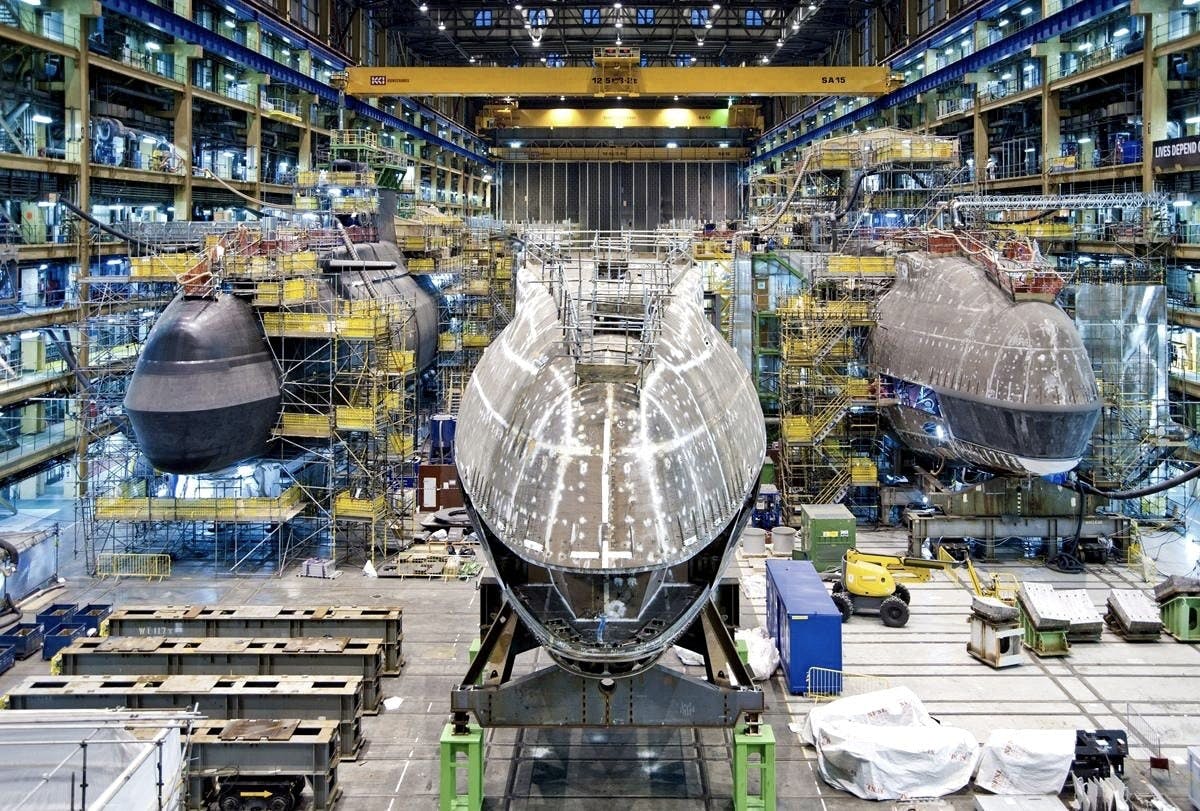In a recent report, experts discuss the necessity for the Royal Navy to expand and modernise its submarine fleet to maintain its strategic edge.
The report, ‘A More Lethal Royal Navy: Sharpening Britain’s Naval Power‘ by William Freer and Dr. Emma Salisbury, outlines the current state of the Royal Navy’s submarine fleet and provides key recommendations to enhance its capabilities.
Nuclear attack submarines (SSNs) are designed for anti-submarine warfare (ASW), anti-surface warfare, and carrying cruise missiles to attack land targets. Modern SSNs are known for their stealth, running quietly and remaining submerged for extended periods without surfacing.
The report highlights the strategic importance of regular submarine patrols: “Regular submarine patrols contribute considerably to deterrence, as an adversary fleet cannot be sure of its ability to operate unchallenged within a patrolled area.” This was exemplified during the Falklands War when the entire Argentine fleet returned to port following the sinking of the light cruiser General Belgrano by HMS Conqueror, an SSN.
The Royal Navy’s SSN fleet currently consists of five Astute class submarines, with two more expected, and one Trafalgar class submarine, which has been upgraded to extend its service life through to 2025.
Both classes are equipped with Tomahawk Block IV land-attack cruise missiles and Spearfish heavy torpedoes. The report notes, “The Tomahawks will be upgraded to the Block V version over the next couple of years to extend their striking range and provide more dynamic targeting capabilities.”
The Astute class will be replaced by a new class of SSNs under the AUKUS programme, a collaborative effort with Australia and the United States. The exact number of SSN-AUKUS submarines for the Royal Navy has not been finalised, with suggestions ranging from seven to twelve.
Recommendations
Additional Dreadnought Class Submarine
The report recommends procuring at least one additional Dreadnought class submarine to mitigate potential delays in the AUKUS programme. “This fifth vessel can be operated as a conventionally armed nuclear-powered attack submarine (SSGN) designed to carry a large payload of strike missiles,” the report states. This would enhance the Royal Navy’s conventionally armed submarine force and provide a backup for the SSBN fleet.
Increase SSN-AUKUS Fleet
The report urges the Royal Navy to order twelve SSN-AUKUS submarines. “Order 12 SSN-AUKUS boats and ensure their design has significant land-attack and anti-ship missile capability, including vertical launching systems (VLS),” it recommends. The integration of VLS would amplify the firepower of British submarines, enabling them to launch a greater number of strikes and potentially serve as a platform for future Hypersonic Cruise Missiles (HCMs).
Ensuring Capability Continuity
The report stresses the importance of avoiding a capability gap between the retirement of the Astute class and the introduction of the SSN-AUKUS class. “Care should be taken to ensure that there is no capability gap between the retirement of the Astute class and the entry into service of the AUKUS class,” it advises.
Collaboration and Workforce Maintenance
To support the submarine industry and maintain a skilled workforce, the report highlights the need to keep the industry active. “This would keep the submarine industry’s workforce active, abating the risk of delays to the AUKUS programme from the need to rebuild the workforce,” it explains.

